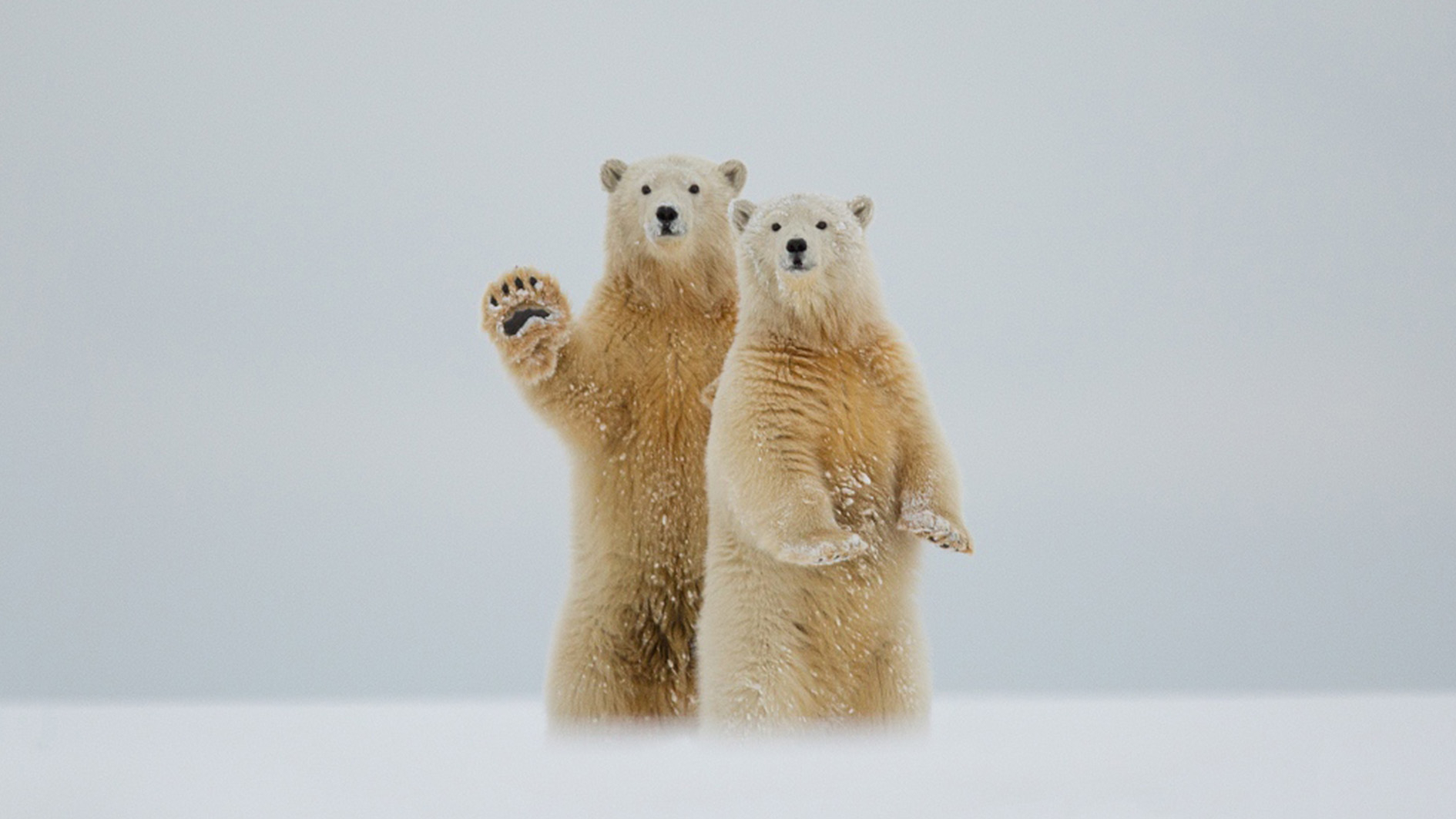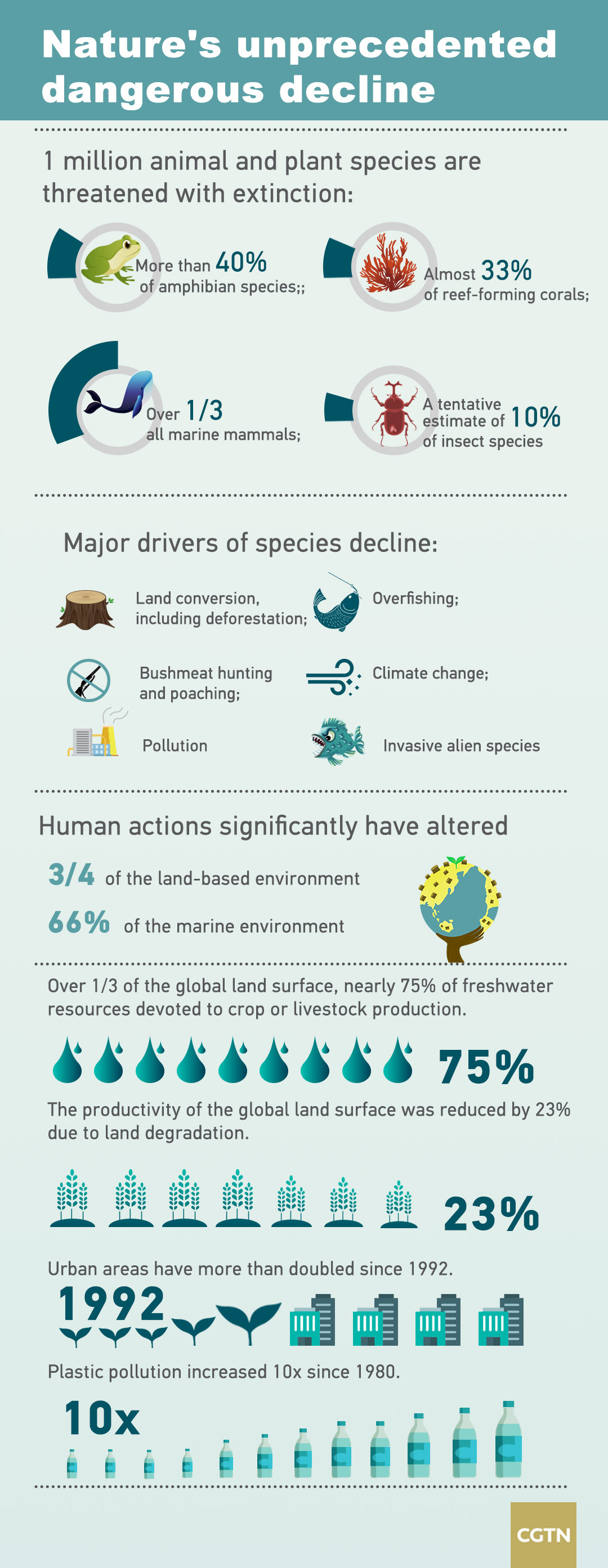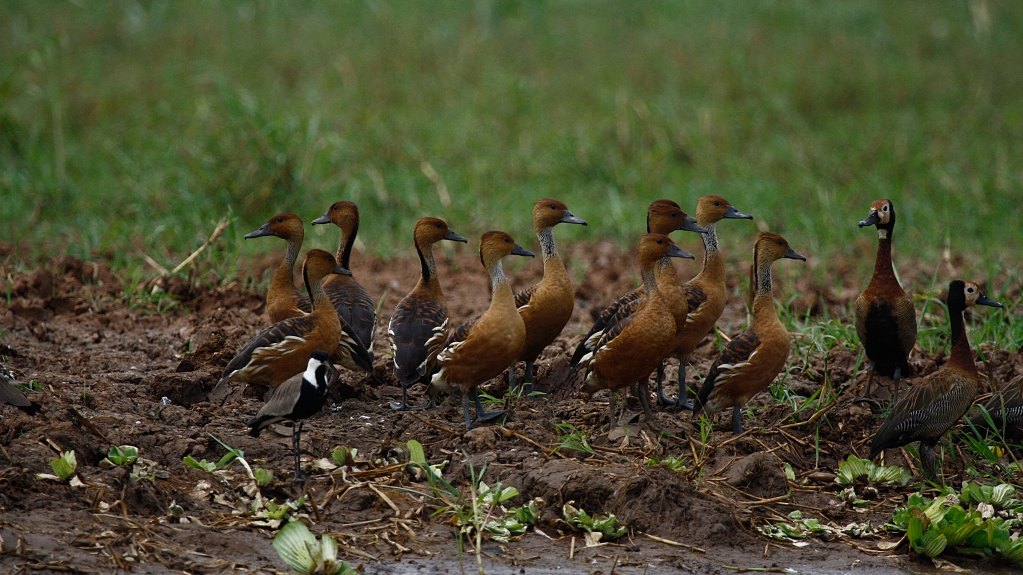
Environment
14:37, 07-May-2019
Eyes on China meeting to reverse extinction risk of 1 million species
Updated
17:57, 07-May-2019
CGTN
02:09

The devastating impact of human activity will lead to the extinction of more than 1 million plant and animal species, many within decades, said a United Nations assessment report released in Paris on Monday.
Prepared by the Intergovernmental Science-Policy Platform on Biodiversity and Ecosystem Services (IPBES), more than 450 researchers and 15,000 scientific findings contributed to the report.
Raising the alarm over the high rate of natural resource destruction in the last five decades, researchers termed it as "unprecedented in human history."
Rising population coupled with climate change and overexploitation of natural resources is taking a toll on the ecosystem, the report said.
Globally, the human population has nearly doubled from 3.7 billion in 1970 to 7.6 billion, increasing demand for food, housing and energy which has altered land use and increased emissions. It has also led to the destruction of forests, rising air and water pollution.
Researchers found that due to human activities, nearly 25 percent of species in the assessed animal and plant groups are threatened, suggesting that about 1 million species are already facing the extinction threat.
"Ecosystems, species, wild populations, local varieties and breeds of domesticated plants and animals are shrinking, deteriorating or vanishing. The essential, interconnected web of life on Earth is getting smaller and increasingly frayed," said Josef Settele, one of the co-chairs of the report.
"This loss is a direct result of human activity and constitutes a direct threat to human well-being in all regions of the world," he added.
Impact on land, sea, water and air

CGTN infographic by Li Yueyun
CGTN infographic by Li Yueyun
Large-scale exploitation of natural resources for energy generation, farming and livelihood have altered 75 percent of the land surface.
In order to feed the world, more than a third of the planet's land surface and nearly 75 percent of freshwater resources are now devoted to crop or livestock production, the report said.
More than 32 million hectares of primary or recovering forest was wiped out between 2010 and 2015. Wetlands have suffered the maximum damage with 85 percent of its areas lost.
Marine creatures are facing double trouble with 33 percent of marine fish stocks being harvested at unsustainable levels in 2015 and uncontrolled plastic pollution. Since 1980, plastic pollution has increased tenfold.
Toxic sludge and effluents from industrial facilities are dumped annually into the world's waters, and fertilizers entering coastal ecosystems have produced more than 400 ocean "dead zones," totaling more than 245,000 square km – a combined area greater than that of the United Kingdom, the report said.
For the first time, authors ranked five major drivers causing catastrophic change on the planet. According to researchers, changes in land and sea use, exploitation of organisms, climate change, pollution and invasive species are leading factors behind loss of biodiversity.
Biodiversity meeting in China to debate missed targets

The report predicts the biodiversity loss will accelerate through 2050 with the tropics being the worst affected if immediate actions are not taken. /VCG Photo
The report predicts the biodiversity loss will accelerate through 2050 with the tropics being the worst affected if immediate actions are not taken. /VCG Photo
The report predicts the biodiversity loss will accelerate through 2050 with the tropics being the worst affected if immediate actions are not taken. Experts believe a global meeting in China next year is crucial to reverse the dismal scenario.
"We are currently in the midst of preparing for the 2020 UN Biodiversity Conference, in China, which will mark the close of the Aichi Biodiversity Targets and set the course for a post 2020 ecologically focused sustainable development pathway to deliver multiple benefits for people, the planet and our global economy," said Cristiana Paşca Palmer, executive secretary of the Convention on Biological Diversity (CBD).
The Aichi targets were fixed in 2010 with 194 countries agreeing to fulfill 20 ambitious conservation goals to safeguard and revive the global biodiversity.
The targets include preventing the extinction of threatened species to reducing the rate of forest loss by 50 percent.
Despite countries committing to meet the targets, "most of the Aichi Biodiversity Targets for 2020 are likely to be missed," the report said.
The biodiversity conference in China will strive to revise targets for protection and revival of natural areas to control climate change, rising air pollution and ensure availability of safe drinking water.
Palmer added that the IPBES report would serve as a fundamental baseline of where we are and where we need to go as a global community to inspire humanity to reach the 2050 Vision of the UN Biodiversity Convention.

SITEMAP
Copyright © 2018 CGTN. Beijing ICP prepared NO.16065310-3
Copyright © 2018 CGTN. Beijing ICP prepared NO.16065310-3